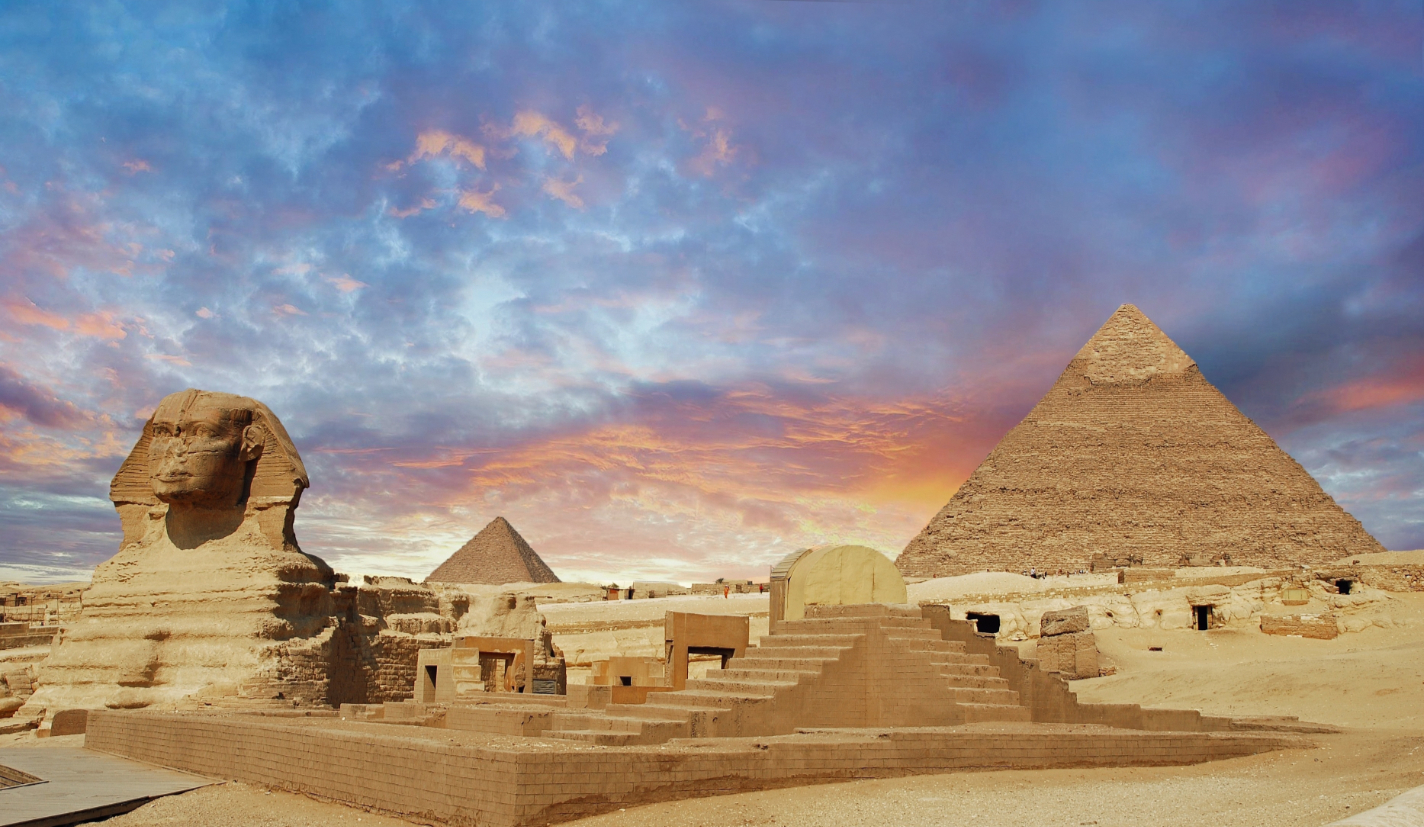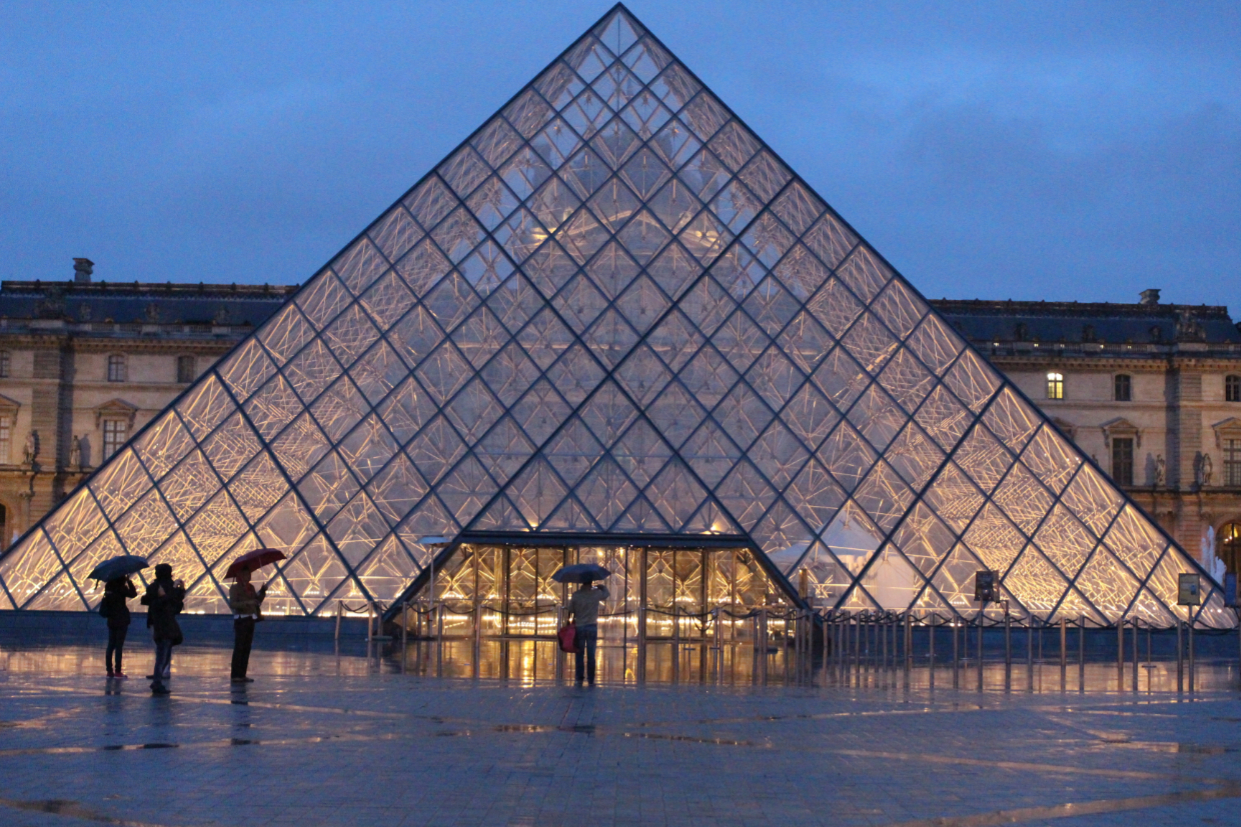Our Theme - Apr/May 2022
The trustworthy triangle – constructing for stability
The trustworthy triangle – constructing for stability
Since way back when – some historians reckon the first painted caves date to 25 000 B.C. – families have been seeking cover from the elements. Apparently triangular tents made from animal hides date back to the 11 century B.C.Today triangles, as design elements, are perceived as dynamic, energetic, active and powerful shapes associated with motion and direction. One’s eye tends to run up to the apex.
Over the centuries, builders learnt that by using triangular shapes, structures can be made stronger and more solid. The Sumerians, in their heyday around 5000 B.C., not only devised the first writing system but also had fine buildings, public water supplies and drainage.
Understanding the science of triangles (trigonometry), enabled early civilizations to erect awe-inspiring buildings.
 Egypt is the epitome of triangular architecture. Their famous pyramids date from the Old Kingdom (2700 B.C. to 2300 B.C.). A 1968 publication on ancient Egypt states: The Egyptians “could also work out angles, especially right angles, by way of a primitive version of Pythagoras’ theorem (which dates from much later – about 1900 B.C.). They knew that the ‘sacred triangle’, with sides of 3, 4, and 5 units in length, contained a right angle. They were not interested in geometry or algebra as such. They developed and used them for practical purposes, like working out the area of fields or the shape of buildings.”
Egypt is the epitome of triangular architecture. Their famous pyramids date from the Old Kingdom (2700 B.C. to 2300 B.C.). A 1968 publication on ancient Egypt states: The Egyptians “could also work out angles, especially right angles, by way of a primitive version of Pythagoras’ theorem (which dates from much later – about 1900 B.C.). They knew that the ‘sacred triangle’, with sides of 3, 4, and 5 units in length, contained a right angle. They were not interested in geometry or algebra as such. They developed and used them for practical purposes, like working out the area of fields or the shape of buildings.”In modern architecture, Paris comes to mind: The Louvre Museum was enlivened in the eighties by a steel and glass pyramid that had, and still has, the world talking. Tongues wagged about the very modern building alongside the stately old museum. One also can’t help wondering whether the Mona Lisa (bless her departed soul) feels upstaged by a modern pyramid.
 Earthquakes pose structural challenges – again, triangles to the rescue in the form of cross braces which are used in construction as one of the means of protecting buildings from collapse. When an earthquake occurs, it sends shockwaves throughout the ground in short rapid intervals in all different directions. Shear walls are often supported by diagonal cross braces. These steel beams support compression and tension, which helps to counteract the pressure and push forces back to the foundation.
Earthquakes pose structural challenges – again, triangles to the rescue in the form of cross braces which are used in construction as one of the means of protecting buildings from collapse. When an earthquake occurs, it sends shockwaves throughout the ground in short rapid intervals in all different directions. Shear walls are often supported by diagonal cross braces. These steel beams support compression and tension, which helps to counteract the pressure and push forces back to the foundation.Says bigrentz.com: “As advanced as the technology and materials are today, it is not yet possible for buildings to completely withstand a powerful earthquake unscathed. Still, if a building is able to allow its occupants to escape without collapsing and saves lives and communities, we can consider that a great success.”
Thank goodness that our Chief Architect knew exactly what He was doing when He gave us the most solid of all triangles: The Holy Trinity. In them lie our stability.
Christine Stoman
To make sure we reach targeted readers audience, selective distribution is done throughout the month on a weekly basis. This ensures the availability of the magazine in strategic locations for readers to pick up for free and read.

















